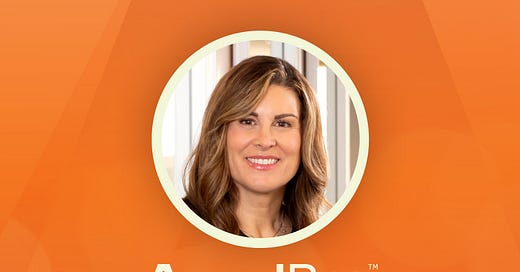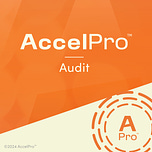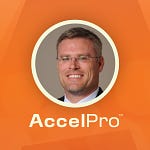Listen on Apple Podcasts, Spotify and YouTube
Welcome to AccelPro Audit, where we provide expert interviews and coaching to accelerate your professional development. Today we’re featuring a conversation with Jeanna Doherty, Partner and ESG Enablement Leader at EY.
In her role at EY, Doherty helps the firm’s clients and client teams understand and prepare to comply with the fast-changing regulations around ESG reporting, both in the US and abroad. In this conversation she shares the biggest challenges she sees companies facing today, as well as her best advice on how auditors can help clients overcome them.
In the course of the conversation she offers her vision of ‘the auditor of the future’ and a thoughtful breakdown of how auditors should think through the process of getting clients from zero ESG reporting to meeting markets’ and regulators’ increasingly stringent demands for non-financial information.
Listen on Apple Podcasts, Spotify and YouTube
Also Available: Additional AccelPro Audit interviews on ESG
Interview References:
Jeanna Doherty’s EY profile.
4:26 | Directive on corporate sustainability reporting (CSRD). European Commission.
4:44 | California's 2023 policy year: Building decarbonization and climate action. U.S. Green Building Council.
4:49 | International Sustainability Standards Board. IFRS.
9:29 | SB-261 Greenhouse gases: climate-related financial risk.
Supplemental Materials:
SEC Adopts Rules to Enhance and Standardize Climate-Related Disclosures for Investors. US Securities and Exchange Commission.
TRANSCRIPT
I. THE BIGGEST CHALLENGES IN ESG REPORTING AND ASSURANCE
Jessica Stillman, Host: You are ESG Enablement Leader at EY Americas. Can you explain what that role entails exactly?
Jeanna Doherty: First and foremost, I am an audit partner and I serve audit clients. In addition to serving my audit clients, I am the ESG Enablement Leader. That means that I help our audit teams, and our audit clients get ready for the new climate disclosure rules. I help them get ready for everything that is ESG assurance.
JS: What are some of the biggest challenges clients are facing in regards to ESG reporting and assurance at the moment?
JD: There are some really big challenges facing our clients today. The transition to a sustainable future is complex and it's going to require change on a very broad scale.
First, let’s address the cross functional impact of these changes. Sustainability issues impact multiple parts of the business and involve numerous stakeholders. These stakeholders have different priorities, and they all believe that their needs and perspective are urgent.
Another challenge relates to regulatory requirements. There is an increasing disparity between investor needs and interest and corporate reporting structures. EY data shows that 99% of investors utilize company ESG disclosures in their investment decision making. However, only 54% of organizations provide investors with relevant data. Reporting on sustainability data faster and more accurately will only continue to grow in importance.
Finally, the ESG agenda continues to move from the fringe to the mainstream, and determining how to address climate disclosure reporting is a top priority for the C suite. While climate reporting and expectations surrounding ESG are increasingly important to the broader business agenda, this can be elusive and difficult to quantify, so despite the significant media attention around climate change, it is still poorly understood by many companies. Much more needs to be done to help businesses understand the impact of climate change and the profound impact that it's going to have on our society and future generations.
At the global level, we're starting to see a snowball effect around sustainability disclosures, with many countries following what the UK and Europe have done, which will go a long way to help tackle climate change. We're seeing global companies that are subject to the Corporate Sustainability Reporting Directive, or CSRD.
They should have reporting preparations underway because the first company subject to those regulations will have to apply the new rules for the first time in 2024, and the reports are going to be published in 2025. California also established its very own climate regulations in 2023. There's also the International Sustainability Standards Board; it has established a global baseline for sustainability reporting and has released two sustainability standard proposals already. The ISSB aims to finalize and release standards in 2024. [Additional note: SEC Adopts Rules to Enhance and Standardize Climate-Related Disclosures for Investors, March 2024.]
Given all of those regulations, there's only 29 percent of companies that are actually referencing climate related matters in their financial statements on a both qualitative and quantitative basis. That's just a handful of challenges, but that's a lot.
JS: Do you have any tips in terms of getting multiple stakeholders to understand that a sustainability agenda is a priority?
JD: Governance is a great starting point. And it really starts with a cross functional team. Before, sustainability sat with a sustainability officer, or in legal or human resources, but now, given that alphabet soup we talked about, given that these filings are going to be made in regulatory financial filings, you are seeing the integration of sustainability folks and financial folks. For me, that intersection, that is where you get the most credible information. Experts in sustainability are now working hand in hand with the finance and accounting teams; they're coming together.
Having a team, having a governance structure in place with a cross functional team made up of sustainability, legal, human resources, finance, accounting, information technology - all those players having a seat at the table - that is a recipe for success.
JS: When companies are forming these multidisciplinary teams, are they generally putting some sort of czar on top of them?
JD: There needs to be someone steering the ship. What we are seeing given these regulations is that the audit committee is very involved from a governance perspective and someone in the controller's office and the CFO's office is leading the team. They are pulling the information together with their experts, the chief sustainability officer, the legal team, etc. But you're right. You need to have someone leading the charge, and because it is financial information going into a financial filing, that's usually what we're seeing.
—
II. ON CALIFORNIA’S NEW EMISSIONS DISCLOSURE RULES
JS: California has passed two bills requiring companies doing business in the state to report greenhouse gas emissions. Can you give an overview of who is covered by these bills and what they're requiring companies to disclose?
JD: Governor Newsom signed them into law. The first one is called SB 253, and that one requires entities that have more than $1 billion in annual revenue in the previous fiscal year, and which do business in California, to disclose their scope one, scope two, and scope three emissions in 2026 based on their 2025 data. You need to report emissions in accordance with the greenhouse gas protocol.
They also need to have those metrics assured, which means they need to have an audit report on them on both Scope 1 and Scope 2 emissions. In the beginning, they'll need to have limited assurance, and then starting in 2030, they'll need to have reasonable assurance. Limited assurance is a higher level, more analytic review–the audit opinion reads, ‘nothing came to our attention.’ Reasonable assurance is the highest level of assurance that we can issue, and that is at the same level of rigor as a financial statement audit: ‘the attached are materially correct.’
The second law that was passed was SB 261 and that requires entities with more than $500 million dollars in annual revenue that do business in California to disclose certain things on their websites. They need to disclose climate related information in accordance with recommendations of the Task Force on Climate Related Financial Disclosures. Those recommendations include disclosures around climate related governance, strategy, risk management, metrics, and targets, including material Scope 1 and Scope 2 emissions. For SB 261, entities are required to post that report on their website by January 1st, 2026.
JS: What's your overall take on how companies are doing? Are they lagging behind? How would you characterize their level of preparedness for this in general?
JD: We're seeing companies all over the map. Some companies are first movers and they are very proactive; they're voluntarily following either some draft form of the rules or their own interpretation of what they want to disclose, and they're getting reports voluntarily assured. We have clients that make disclosures and have their metrics assured right now. And we have others that are taking a wait and see approach.
But what we do know is the CSRD is in effect right now. And so our recommendation is for companies to evaluate the rules that are out there. Take a look at the pending rules that will be issued here in the US and start on the journey; start engaging with audit committees, with boards, with C suites, and start putting together a model and a plan to be compliant with the rules.
From our perspective, governance is a great starting point. It allows companies to set the right foundation. Not just for future reporting, but for how climate and ESG will actually be managed. Once that strong cross-functional governance and accountability framework has been established, then companies can move on from there. They can move on to strategy, risk management and then metrics and targets. These activities can be leveraged to satisfy the requirements, and they can be beneficial in preparing for the regulations. They’ll also be helpful from a reporting perspective and operationally, as well.
JS: Collecting good data and finding a central home for it is one of the perpetual challenges with ESG. How are you helping clients work through that challenge?
JD: Yes, collecting good data begins with an understanding of what data needs to be collected and where it can be accessed for non-financial reporting, which provides insight into the framework for gathering, analyzing, and reporting pertinent data. Non-financial reporting will demand new technology and tracking solutions and mandate all involved are aligned on the same goal and speaking the same business language.
For companies to realize their ESG agenda, they're going to have to adopt technologies that will help improve the quality of the ESG data and optimize and manage their controls. Some organizations are using technologies that track in detail their use of electricity, but it's not until they implement energy efficiency measures or renewable energy strategies that they will achieve the associated savings in carbon reductions. So really it's an opportunity to improve and enhance processes to not only have better controls and data, but also have better information. And we all know that information is power, and that can be very useful to an organization and its investors.
—
III. WHAT DOES THE AUDITOR OF THE FUTURE LOOK LIKE?
JS: In all of these conversations, we finish off with a section where we talk about the guest's own career trajectory. Can you talk me through how you found your way, one, into working in the audit space, and then more specifically, how did you end up focusing on ESG assurance specifically?
JD: I've been at EY for 29 years. Accounting was a natural fit for me. I took a bookkeeping class in high school, not knowing anything about the field. My high school teacher was my first mentor and he encouraged me to look into accounting as a major in college. And when I did, I was drawn to the client service aspect and working with teams and clients and problem solving. I had great mentors and sponsors who guided my career. Even though I've been at the same place for so long, I have done so many different things across my time here. I have been an auditor since day one, but I'm active with talent matters, I'm an active diversity mentor, and I'm active with our recruiting efforts.
In, I think it was 2014, I had the opportunity to lead the Climate Change and Sustainability Services practice while serving audit clients. It sparked my passion for credible and sustainable reporting, and for the way in which non-financial reporting goes hand in hand with financial reporting and how important it is. While I'm not leading that practice any longer, I have stayed connected with it.
When the regulatory agencies started issuing and releasing rules around ESG, it was the perfect time to get back involved and help our audit clients and our audit teams with the ESG rules. That's something that also is super exciting for the future of the profession. If I think 29 years ago, it was all financial statement audits. Now, integrating non-financial reporting hand in hand with financial reporting is something the auditor of the future is going to be working on every year.
JS: I love that expression, the auditor of the future. Are there certain skills or mindsets that you think are different or essential for the auditor of the future as opposed to the auditor of the past?
JD: The auditor of the future to me is someone that is well rounded; it matches the dynamic career that they're going to have. It is going to be financial statement reporting, non-financial reporting–it is a career embedded with data and technology. And it is not someone that stereotypically might think that they're sitting in a room detail testing transactions. The auditor of the future is a creative thinker. They are someone who is using data and technology to come up with the best answer and solve problems in a different and better way.
JS: You've been in the space for almost 30 years and I'm sure you've picked up a ton of wisdom over all that time. But what's one of your top one or two pieces of advice for auditors who are earlier in their careers to find success?
JD: The advice that I love to give our young folks coming in is, “Be open to the opportunities and be open to the path ahead.” The opportunities come where you don't expect it to happen, so consider everything that comes your way.
JS: The guiding principle of this podcast is peers learning from peers. Can you think of a time in your career when advice from a peer was really critical for a decision you made or some other critical aspect of your career?
JD: The best learning I've had along the way is either from peers or people on my teams that are technically below me. I love that idea of peer-to-peer learning. One of the pieces of advice that I received long ago was, “Never forget what it's like to be the level below you.” So in public accounting, you move along at a pretty quick clip. You are a staff for a couple of years, you're a senior for a couple of years, and you are moving quickly. As you're learning all of these new things, remember what it was like to not be at that level. That is teaching you to be a good mentor, a good teacher, a good coach, a good sponsor.
JS: What's your advice for an auditor who's just starting to work in ESG and is trying to wrap their head around it?
JD: Think about it in steps. We're very good at following an audit program. I like to think of the trajectory of ESG and assurance in that same manner. You're going from where you are now to ultimately getting something audited in an audit report. Companies can't report on something that they don't know, so how do you go from there to having the audit report done?
Companies can do what's called a gap assessment. That's where they understand their current data and disclosures, and where they may fall short of the requirements. Once they've addressed the gaps, then they can make further improvements and enhancements in their reporting. That's where they can work on integrating IT and developing more robust processes and controls. That's the first step.
Companies then can engage with their auditors and do what's called a pre-assessment. That pre-assessment is done prior to seeking assurance. It's a great way for a company to see how prepared they are for assurance. Is a company ready to have their metrics audited? The auditor would give observations and recommendations for process and control enhancements, and it's very useful for the company's journey to assurance.
Then the next step would be actual assurance. First, that’s limited assurance, which we talked about: ‘nothing came to our attention that would say that these numbers aren't right.’ And then the highest level of assurance, that’s reasonable assurance, the same level of a financial statement audit, with a high level of rigor, a high level of testing. This information is materially correct.
You're going to learn a lot along the way, be open to the experiences, think about it logically. The combination of both financial and non-financial information is critical to the capital markets. And that's what we're seeing these regulations try to address.
This AccelPro audio transcript has been edited and organized for clarity. This interview was recorded on November 30, 2023.
Listen on Apple Podcasts, Spotify and YouTube
Also Available: Additional AccelPro Audit interviews on ESG
AccelPro’s expert interviews and coaching accelerate your professional development. Our mission is to improve your day-to-day job performance and make your career goals achievable.
Send your comments and career questions to questions@joinaccelpro.com. You can also call us at 614-642-2235.
If your colleagues in any sector of the audit field might be interested, please let them know about AccelPro. As our community grows, it grows more useful for its members.












